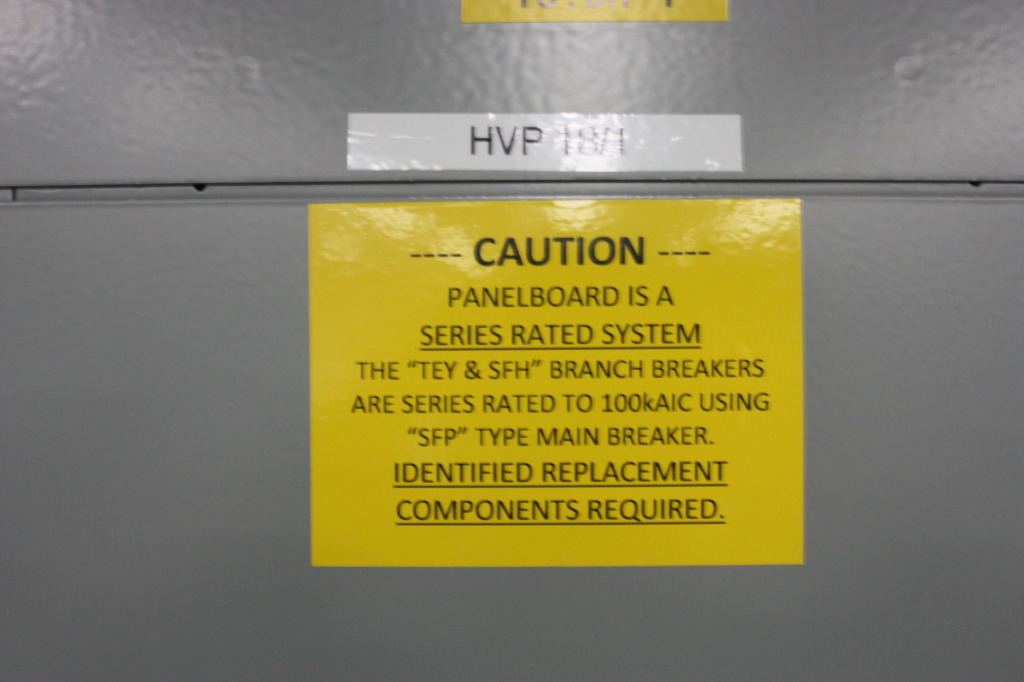706-602-WIRE (9473)
FAX: 706-602-04501279 Mauldin Road
Calhoun, GA 30701Mon - Fri 7:30 - 5:00
Sat - Sun CLOSED706-602-WIRE (9473)
FAX: 706-602-04501279 Mauldin Road
Calhoun, GA 30701Mon - Fri 7:30 - 5:00
Sat - Sun CLOSEDA short circuit analysis will identify the available fault current at each point in your electrical distribution system. This is important to know because without this information, it is not possible to adequately specify the AIC ratings of breakers and fuses or the SCCR rating of switchboards and panel-boards at various locations in your facility.
Every breaker and fuse will have two different amp readings listed on them. The first amp listing is in large obvious print. It is the overcurrent rating of the device, such as 100 amps or 200 amps. The second amp listing can usually be found in the fine print. It will list the Interrupt Rating (IR) of the device, such as 18,000 amps at 480 volts or 65,000 amps at 240 volts. The interrupt rating indicates the maximum amount of current that the device can safely interrupt. You may think that a 100 amp breaker will never see 18,000 amps, but what happens is that during a fault (short circuit event) the impedance drops to a very low value. When that happens, the current will begin to rise to an extremely high level for a short period of time (usually fractions of a second). The maximum amps that can be delivered to the fault location is determined by the utility connection and the distribution system inside your facility.
The short circuit analysis will take a look at the utility contribution, motor contribution and size and length of the conductors that form your distribution system. Using all of this information, the maximum fault current at each location can be determined. This maximum fault current will then be compared to the AIC ratings on your overcurrent devices and the SCCR ratings of your equipment. Any deficiencies will be reported to you, so appropriate action can be taken.
It should be noted that the short circuit analysis is not just a one-time study. It should be updated to include modifications to your facility and also modifications to the utility. As the utility system expands, available fault current to your facility can vary as well. For example: a facility that was properly engineered 20 years ago, may find that due to increased fault currents available from the utility, the service entrance equipment is no longer adequate. This could lead to catastrophic results.
A Short Circuit Analysis is typically included with an Arc Flash Survey. Schedule yours today!

